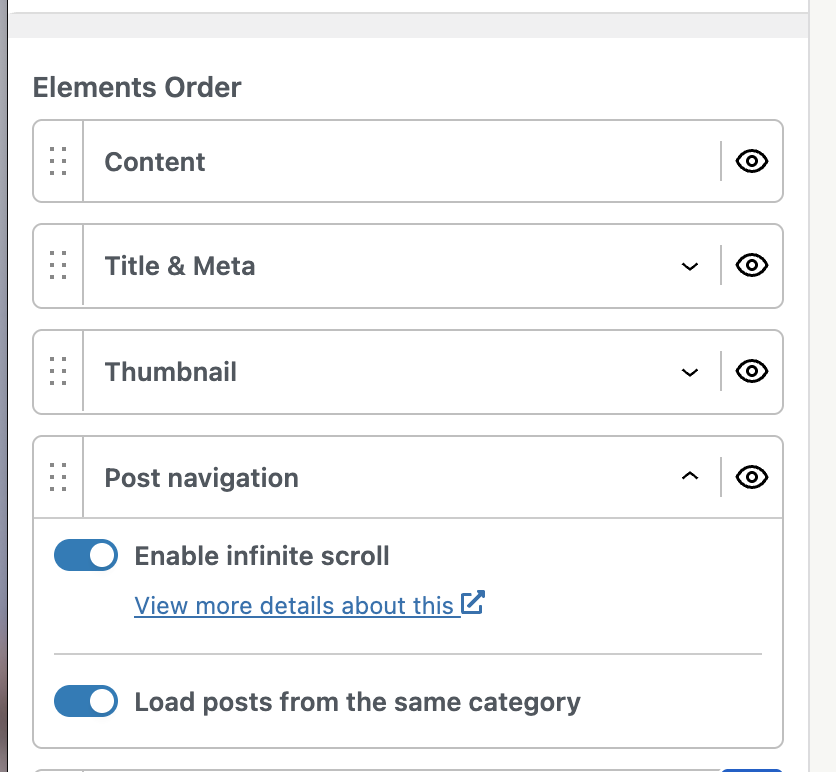Neve Single Post Options
For more details check out the full Neve documentation and Neve PRO documentation.
📝Note: These options are part of both Neve and Neve PRO. More advanced options can be found in Neve PRO.
Single post (article)
General options (apply to all posts)
Navigate to Appearance > Customize > Blog > Single Post to access the options:
- Sidebar Layout and Content Width are two related options. When choosing a Left or Right sidebar layout, make sure to add widgets in the Sidebar, by going to Appearance > Customize > Widgets, and select a corresponding Content Width which would allow for the sidebar to show. ( e.g. 70%)
- Header Layout is the main setting of the Single post page. Depending on the selected option ( Normal or Cover ), additional dedicated options are available.
- The Elements Order and Meta Order options allows you to choose a specific layout for the elements of the single post page. Drag & drop elements to reorder them, or click on the little eye icon to show/hide them.
The Post Navigation field allows you to enable the Infinite Scroll option. Once Infinite Scroll is enabled, you can also turn on the Load posts from the same category option.
If this option is enabled, posts will be loaded from the same category. If it is disabled, the infinite scroll will load the adjacent post instead.

Individual options (apply to a specific post)
If needed, each post can have its own layout, overriding the general options set before. To obtain that, click on the Neve icon from the single post page, which will open a new panel of options.


